We haven’t had a freeze in San Antonio yet, but my plants are looking pretty raggedy, which makes me want to get out and gather seeds.
That’s good news because now’s the time to harvest wildflower seeds and get them in the ground for next year. Most wildflower seeds from our part of the world appreciate being planted in the fall so they can settle in, have a chance to scarify their outer crust and find their way into the soil to eventually put out roots and chutes to become next year’s round of wildflowers.
You can gather and distribute seeds directly onto the soil. Or, you can make seedballs, a fun, interesting and unusual way to use up surplus seeds and spread the wildflower wealth around.
Introduced in the 70s, seedballs are a form of “guerilla gardening” whereby seeds, soil and clay are mixed together into tidy germination bombs that are said to have an 80% higher success rate than simply broadcasting seeds onto soil. Adding red potters’ clay to the mix protects the seeds from being blown away by wind and a dash of chile pepper makes the seeds less tasty to insects and birds.
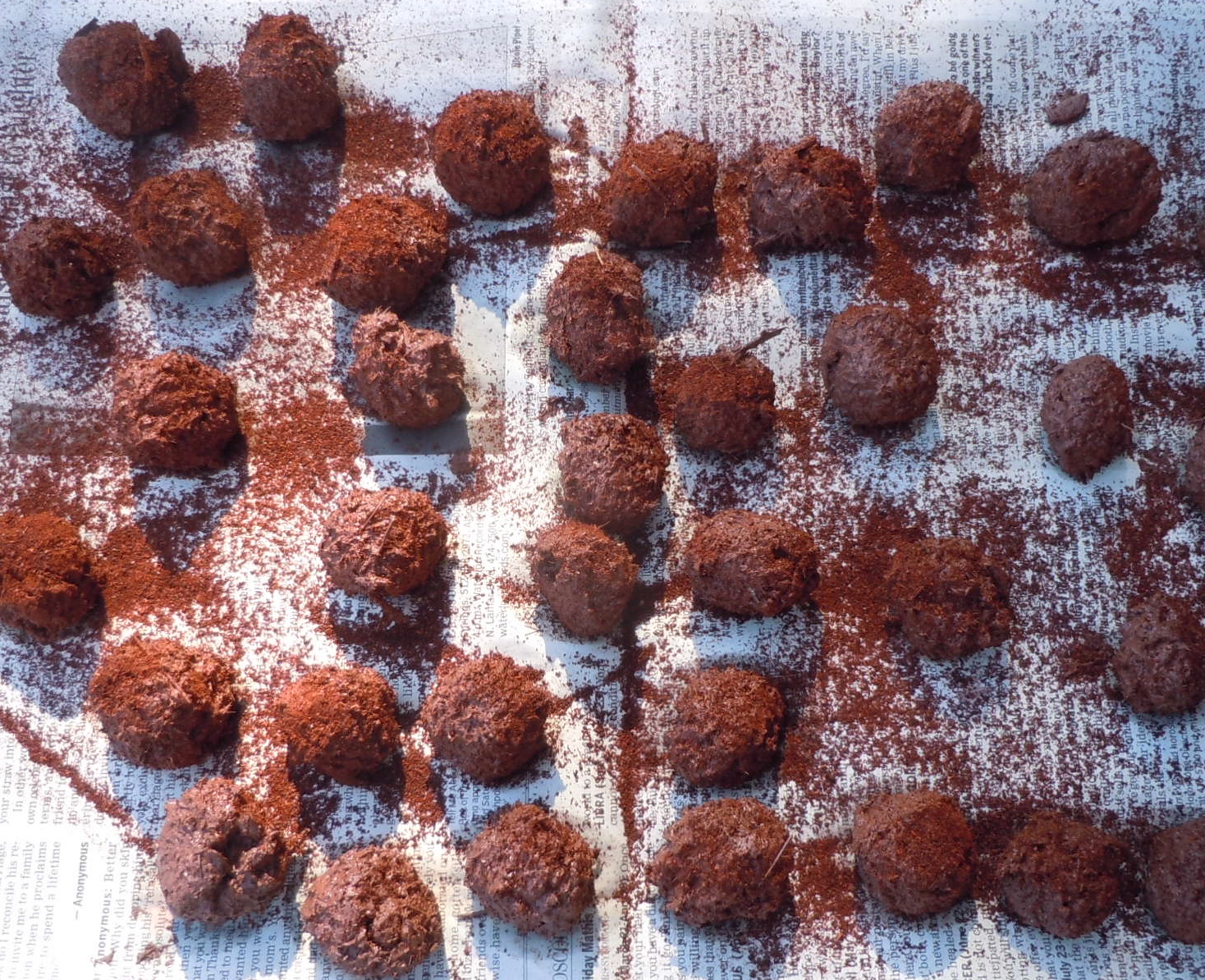
Let there be seedballs! Mark the march toward spring and help make next year’s wildflowers happen by making seedballs. Photo by Monika Maeckle
Gardeners including me report mixed success with seedballs. I’ve had some seedballs result in lovely wildflower patches; others just melted into the earth. Professional landscapers and ecological restorationists also have mixed opinions about seedballs.
Our friends at the Ladybird Johnson Wildflower Center I told us that for large-scale restoration projects, the success rate of seedballs is too low–mostly because assuring the seeds get enough soil contact to germinate once the balls fall apart is a hit-or-miss proposition. For those of us who can personally monitor our seedballs, that’s usually not an issue.
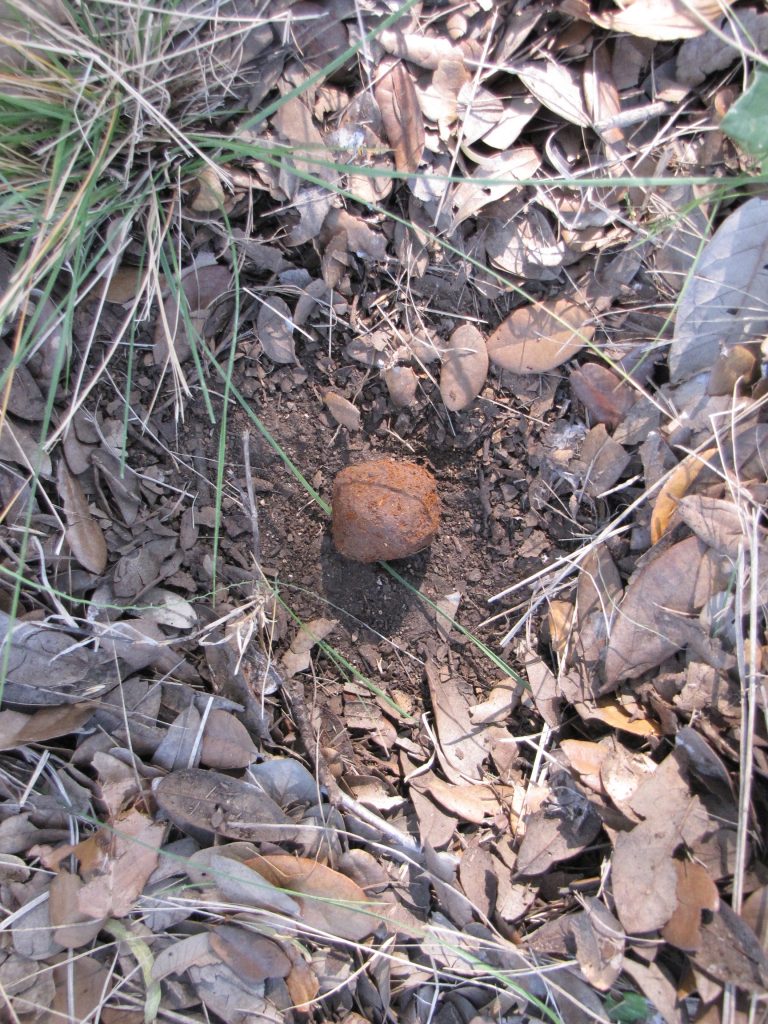
Seedball properly tossed. Make sure it has maximum contact with the soil and doesn’t have to compete with grass. Photo by Monika Maeckle
Emily Neiman at Native American Seed in Junction, Texas, suggests that when it comes to seedballs, size does matter.
“From my experience, most people make them too big and it takes forever to break down and sprout,” she shared via email. “No bigger than size of an Almond M&M is good–and only a few seeds per seedball,” said Neiman.
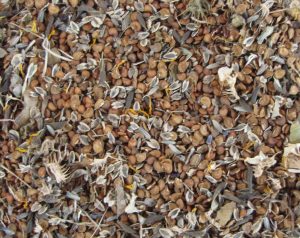
Collect seeds now for seedballs. Photo by Monika Maeckle
At my house, we just like to play in the dirt and typically celebrate the arrival of winter with an annual rite of making seedballs. Some folks bake Christmas cookies. Others craft tamales. We like to mix soil, clay, water and seed with a generous dash of chile pepper to make seedballs, a facilitator of wildflowers, the nectar sources and hosts for next year’s butterflies.
Generally, seedballs don’t require watering and you should NOT bury or plant them.
Simply toss them in a vacant lot, your front yard, or a wildscape situation like a ranch or roadside. Wait for rain to melt away the clay casing, and nature will do the rest.
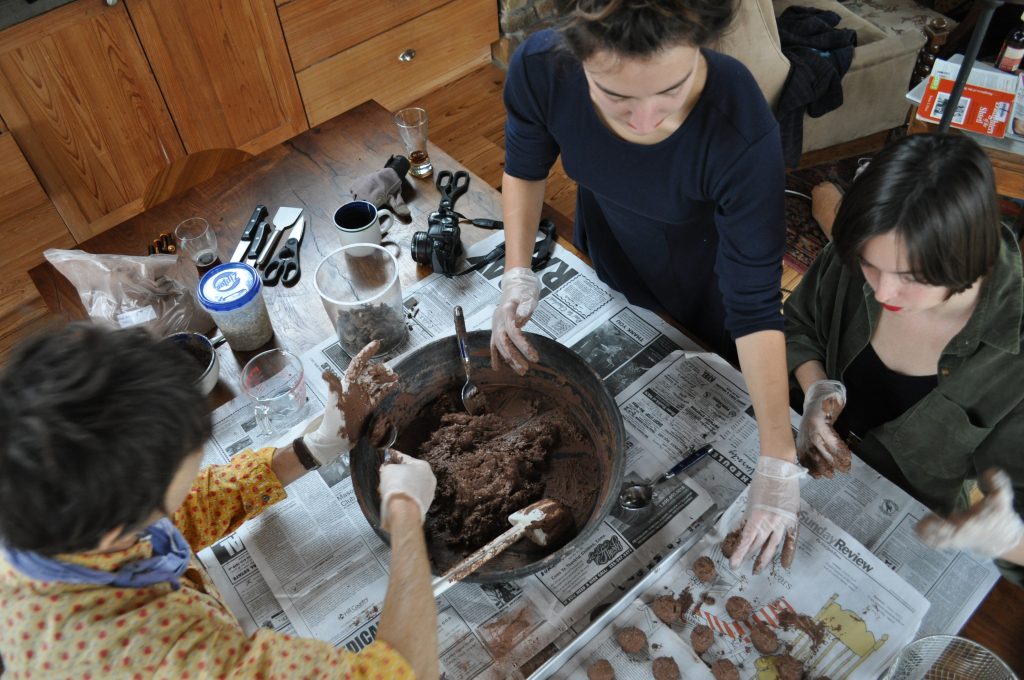
Seedball party? Count me in. Photo by Hugh Daschbach
Seedball recipes vary as much as those for Christmas cookies. Some seedball aficionados recommend a 3:2:1 ratio of soil, clay and seed, adding nutrient rich ingredients like worm casings or other natural fortifiers. The Lady Bird Johnson Wildflower Center encourages a concoction that includes sifting, humus with good bacteria intact, your local soil, and sand.
I’m not that scientific about it. We’ve had great success using three parts local or potting soil, one-two parts red potter’s clay powder (purchased from a pottery supply) and one part seeds. The clay binds the ingredients and keeps the balls intact. Add water until you get a workable dough that allows you to roll a spoonful of seedball mix into a ball that doesn’t stick. If you find that your seedball dough is too watery, just wait. The soil soaks up the excess liquid with time.
Put them on newspaper to set up and then add my secret ingredient: red chile pepper. The pepper discourages insects, birds and other critters from denigrating or eating the seeds, giving them a better chance at germinating and becoming wildflowers for pollinators.
Once the seedballs set up, usually after 24 hours, store them in paper bags for later use or toss them right away.
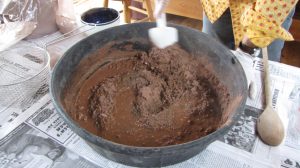
Soil, seeds, red clay, water–and chili pepper. Mix until you get a consistency that is easily formed into seedballs.
When you toss them, make sure they land where they can make contact with soil, as in the photo above. If the seedballs have to compete directly with grass, leaves or forbs, germination rates of the seeds decrease.
Remember to use only native seeds for wildscaping situations. Good luck and let us know how it goes.
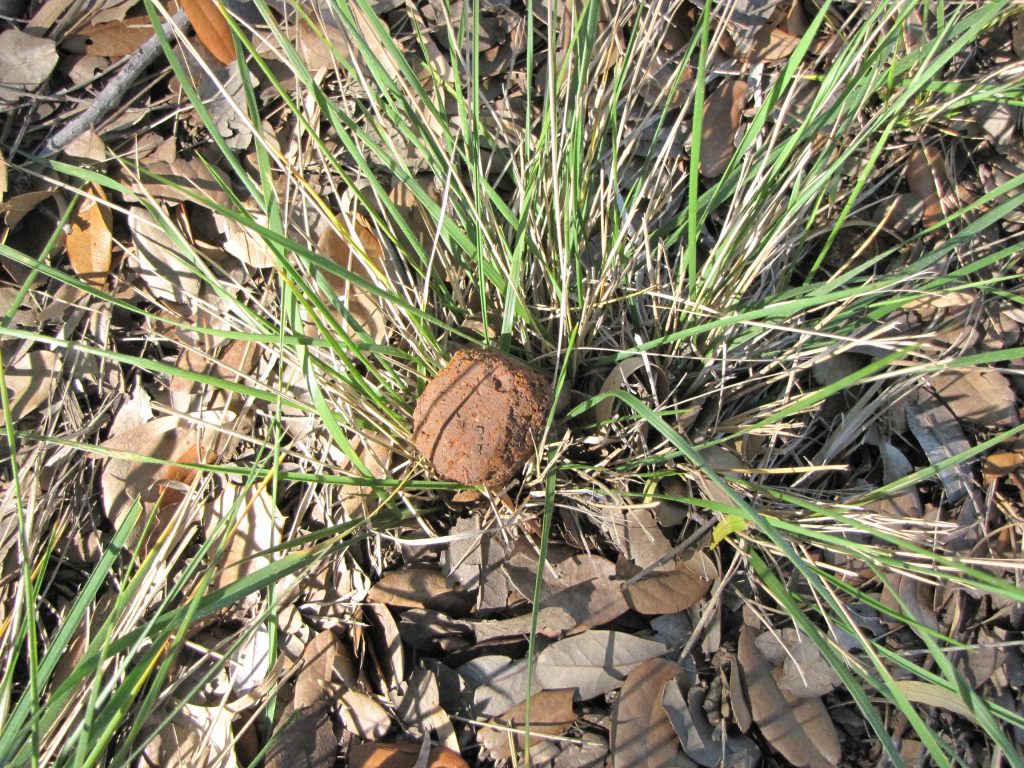
Seedball improperly tossed. Make sure it makes contact with soil. Photo by Monika Maeckle
Texas Butterfly Ranch Seedball Recipe
- 3 parts local soil or potting soil
- 1 – 2 parts red potter’s clay powder, also known as “terracotta powder” at pottery supply stores
- 1 part native wildflower seeds
- Water, as needed.
- Newspaper and cookie sheets for drying seedballs
- Stainless steal bowls or pots for mixing
More posts like this:
- Guidance on milkweed management confuses butterfly gardeners
- Late season Monarchs create gardening quandary
- What to do with late season Monarchs
- MIghty Monarchs brave south winds, Hurricane Patricia, to arrive in Mexico
- How to Raise Monarch Butterflies at Home
- Part II: More Tips on Raising Monarch Caterpillars and Butterflies at Home
- Tropical Milkweed: To Plant it or Not is No Simple Question
- Oh Those Crazy Chrysalises: Caterpillars in Surprising Places
- Butterfly FAQ: Is it OK to Move a Chrysalis? Yes, and here’s how to do it
- Should You Bring in a Late Season Caterpillar into Your Home?
Like what you’re reading? Don’t miss a single post from the Texas Butterfly Ranch. Sign up for email delivery, like us on Facebook, or follow us on Twitter, @monikam.

Year after year many seedball preparation and tossing articles are published, but I can’t recall ever seeing any follow up articles that photo documented whether or not the tossing reliably produced alot of new butterfly nectar plant or milkweed growth in wildscape situations such as pastures and roadsides.
An easily accessible powdered clay is Crayola which is available at Target and other retailers. Also, seedballs should be placed in areas that meet the needs of the type of plant, which for most Texas wildflowers would be areas that get full sun (6+ hours of full sun), are well-drained (don’t often look muddy), don’t get mowed at most more than once or twice a year, and aren’t due to be disturbed (no “Walmart coming soon” or highway work signs).
Thank you for sharing your insights about the right time to harvest seeds. In addition to this, the recipes are really new to me when I read them. Keep sharing more to help all the gardeners be informed.